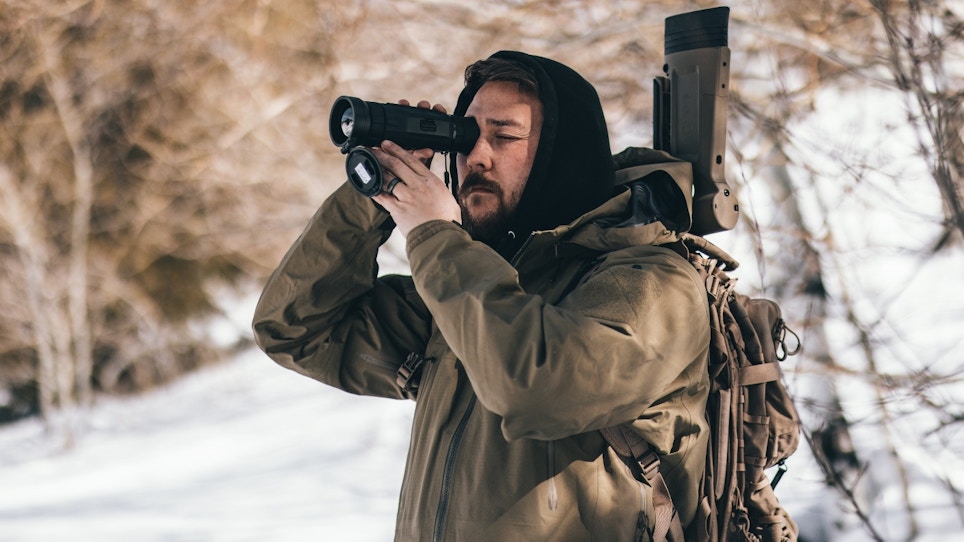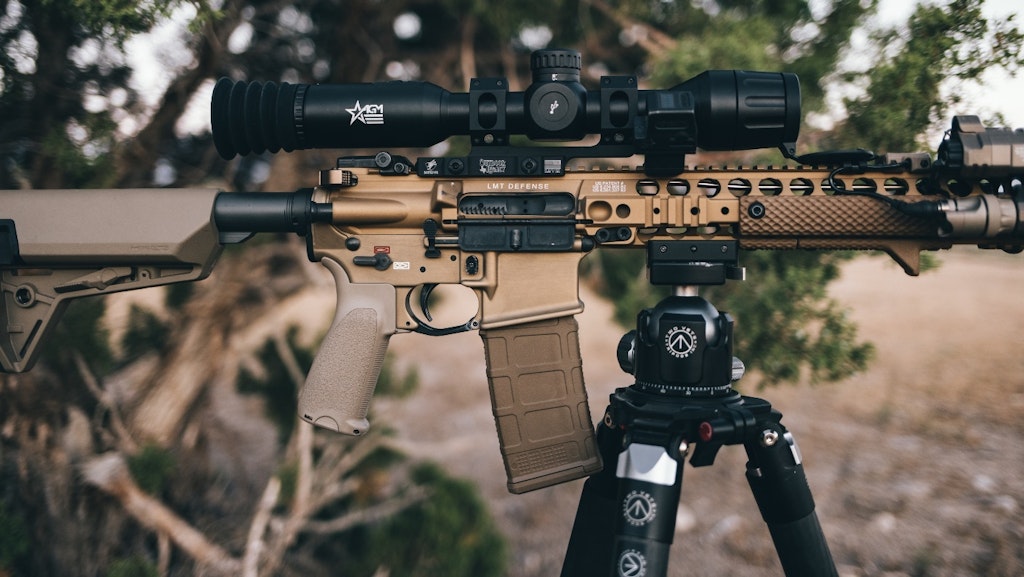AGM Global Vision is relatively new to the market, but it’s run by industry veterans and is shaking up the night-vision and thermal game. We sat down with Chase Stephens, director of brand development for AGM, to talk about the company and what he sees happening in the industry as a whole.
Can you talk about the company’s history and its place in the industry today?
AGM Global Vision was officially started back in 2019, and it is currently being run by a couple of the original founders, Gary and Mark Tarakanov. They helped co-found multiple companies in the optics space over the course of the last 25 years, the most well-known of which was Armasight. So, although the AGM brand itself is still relatively young, the founders of the company have spent a lot of time and effort over the past couple of years mobilizing a team of very experienced department heads that have more than 40 years of combined industry experience. That experience helped us straighten the learning curve, if you will, because we could avoid a lot of the mistakes and pitfalls that most young companies can only gain through experiencing them first.
I think AGM is currently known within this space for its value and diversity. Many companies in our industry tend to specialize in either thermal imaging or traditional tubed night-vision devices, and AGM is unique in that it offers products across the entire night-hunting/security product spectrum.
What sets AGM apart?
I’d say it’s probably a combination of our product assortment diversity and commitment to consistent improvement. We’re always trying to combine product feedback data from both dealers and end-users, as that typically guides our entire product development process. Every new product or product family we introduce is aimed at improving on previous iterations. It’s a pretty simple process for us: do more of what people like and less of what they don’t.
What specific product or model have you seen the most growth in recently?
Well, ‘currently’ might be a better word than ‘recently,’ but we’re squarely in the middle of our newest, and most anticipated new product introduction of the last couple of years with our Clarion dual-field-of-view thermal riflescopes. We’re happy to be the first brand to introduce a dual-field-of-view riflescope equipped with a 384 resolution thermal sensor, as well as the most aggressively priced 640 resolution model. This is the first time we’ve offered a thermal optic with optical zoom capability, which offers shooters multiple base magnification options, which can then be changed to optimize your field of view depending on your geography/property type.
What are some features and specs that hunters, specifically, should look for when buying thermal and night-vision?
So, if I had to rank the five most important things most hunters look for in a thermal hunting optic, they’d be something like: image quality/clarity, firmware package, battery life, warranty and compatibility with multiple shooting platforms (AR-style and bolt-action-style).
With night-vision, the market is much more focused on handheld and head-mountable options. Military and law enforcement units use them for increasing their nighttime operational capabilities, while hunters are finding them more and more useful for navigation and hands-free scanning during night-hunting excursions.
There’s a huge price spectrum across thermal and night-vision optics. What accounts for such vast differences in price and quality?
With thermal, a sizeable portion of the cost differences come from a combination of the resolution of the thermal sensors, the size of the germanium lenses, and the quality of the micro displays. These are highly technical optics with miniature computers on board, so producing those might be difficult in and of itself, but when you are then required to make them durable enough to handle high recoil from a firearm, it gets exponentially harder.
With night-vision, it’s typically all about the tube quality and glass optics. High-quality night-vision devices are still used daily by some of the most advanced militaries in the world, so the fact that only the most highly trained units in the most capable militaries are equipped with them kind of signals the difficulty in their production.
Do you have any predictions on what we can expect out of the shooting industry in general in the next year? The next five years?
It seems like this type of question gets harder to predict with every passing year. In general, hunting seems to be, quite literally, the oldest traditional, recreational activity humans engage in. Which means that at its core, it’s not a whole lot different to what it was 100 years ago. The hunters and animals haven’t changed much. But the equipment has changed, and within the equipment specifically, I think digital optics are just going to get more and more popular.
I think the number of hunters in five years will be pretty similar to what it is today. But the number of digital optics in the shooting industry will probably double within five years. Our youth have grown up with digital devices in their hands, so their familiarity with digital devices will just continue to grow this market, and not just in night-vision. 4K and HD sensors are eliminating a lot of the immediate pixelation that would have limited digital optics 10 years ago. Eventually, the latency will decrease to a point where it’s almost unnoticeable, and the customization in reticles, colors, app compatibility, share-ability, recording, etc. will be enticing to traditional glass hunters.
Where does AGM see potential for growth? How about non-growth? Is there part of the industry that’s shrinking?
Digital optics in general is where we see the most potential. This includes both thermal and digital day/night optic capabilities. But if the number of shooters/hunters is relatively steady over that same time, then that growth has to be at the expense of something else. My guess is that it will be traditional glass optics. Traditional glass hunting is going to maintain its place as the largest optic category, but the gap will begin to close, year-after-year.
What can we expect out of AGM in the first half of 2024? What products have you most excited for the future?
If all goes well, we’ll be pretty swamped for the first half of 2024. We just enjoyed the largest SHOT Show in our company history, with multiple long-awaited new product introductions. We introduced the previously discussed Clarion dual-field-of-view scopes, as well as the long-awaited Rattler V2 thermal riflescopes. Our original Rattlers put AGM on the map in the thermal space, but the new housing/sensor/firmware package of Rattler V2 just takes our most popular product family to a new level.
What sort of product testing do you do?
So, we do a combination of recoil testing at the factory level, followed by live-fire recoil testing at the range and actual hunting in the field. Before an end-user puts their hands on a new product from AGM, we’ve typically gone through three or four rounds of changes to housings, molds or firmware versions before getting it to where we think it’s ready for introduction. And the later rounds of development involve working with some of our closest partners and outfitters to help gather real-world feedback that might get missed in an office or on a factory floor.
How does AGM support its dealers?
In 2023, AGM invested more money on operations, customer support, content creation, product development, advertising and a completely new website than we had in the previous four years combined. We reached a critical mass at one point in late 2022 and early 2023 where all of our internal systems and processes needed to be revamped if we wanted to maintain a high level of customer support and satisfaction as we grew at such a rapid pace. And although there were some pain points during the implementation phases, we’re now reaping the benefits. This was all done with dealers in mind.
In 2024, we should be doing almost everything faster and more efficiently. We’re developing new products at a faster pace, we’re shipping at a faster pace, we’re offering dealers service and support at a faster pace, and all that should help make our dealers’ lives easier. The better we are at supporting them, the more likely they are to suggest our brand over another.
Do you have any advice for retailers about selling thermal and night-vision optics and AGM products specifically?
My best advice would probably be, don’t be overwhelmed. Thermal and night-vision products are typically sold at much higher price points than traditional daytime optics and accessories. But don’t let that scare you. You don’t have to take six-figures worth of product to start offering AGM products in your shop. If your shop exists in a state with healthy feral hog populations, or a robust predator-hunting season, then you’ve most likely got people walking in your store interested in thermal and night-vision. You just might not know it because you haven’t carried it before.
What’s your personal favorite AGM product, and why?
A tougher question to answer than you realize! I’m going to have to go with the Clarion 640. Two months ago, I’d have said our Rattler V2 384 with a 35mm lens. But the new Clarion stole the distinction as soon as it hit the market.
Is there anything you’d like retailers to know about AGM and its products?
We’ve got something for everyone. We offer the largest assortment in the industry. Whether it’s a sub-$1,000 thermal riflescope with a 256 resolution for a guy wanting to get into the thermal market for the first time, or a high FOM Generation 3+ night-vision goggle with military-grade specifications, we have something for almost anyone that wants to operate at night, for virtually any reason.







